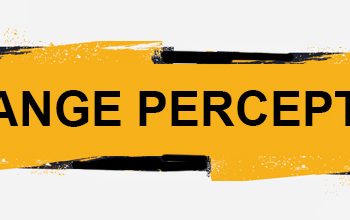Intro by Skip Cohen
There’s so much great information available on the Internet, and Bev Walden needs to be on your radar! In her weekly “Tuesday Tidbits” email two weeks ago, she wrote about the importance of emphasizing the experience in the selling process rather than explanations of the finished products themselves.
I’ve attended a lot of Bev and Tim Walden’s programs over the years. They’re two of the finest portrait photographers in the industry. They make it a point in every presentation that they’re not selling a print, but the experience. And, they’re creating what’s to become a new family heirloom.
When you sell products, whether they’re paper, canvas, metal, etc. you’re selling a commodity accessible to everybody. But, when it’s an experience your selling, you become more unique. By getting away from explaining the products themselves, you’re able to focus on the emotional value of your creativity!
This recent email from Bev hits hard on the importance of simplifying the sales process, so you’re spending more time highlighting the experience rather than losing client attention with unnecessary details!
By Beverly Walden
Customer experience needs to be like a movie script that is in place before anything else.”
Scott McKain, Author, Speaker and Coach
We often ask photographers as we teach, “How much time do you spend in a typical sales appointment experiencing the imagery versus explaining your finishes, sizes, packages, etc?”
What is usually said is 50/50 or 40/60. We are looking for experience to vastly outweigh explanations, so the answer for us is 90% experience and only 10% explanation at the close to validate the purchase.
There is a saying, “People buy with their heart first and then justify the decision with their head.” We live and breathe that mantra in our sales appointments. We hit hard on the emotional aspects of our imagery and stay on it throughout and then do a quick rundown of more factual items at the end (only if needed).
What clients are buying from us (and you) is experience, emotion and memories. What clients are not buying is paper or canvas, bubble texture or linen texture, 16×20, or 11×14…this or that!
If there is too much talk about the details and not enough about the emotion, it switches the brain from right to left, from emotional to factual. And guess what happens?
THEY FOCUS ON PRICE!
You are asking them to think and all they want to do is feel!
OK, you are probably wondering how you can handle giving the information you need to in a sale without overwhelming them.
We find that when we ask our clients to make decision after decision, three things happen that will kill your sale…frustration, confusion and fatigue!
When these occur, you will hear the dreaded words, “Can I just think about it and let you know later?” I hope you realize that your sale just died, so go ahead and call the cemetery! It is very difficult to get good sales numbers after the client goes home as the excitement plummets and so do good intentions to call you. Most of the time, you will end up chasing them and then it turns into a contentious situation all around. It is lose-lose.
What we do to combat this is a two-pronged approach; simplify everything and pre-educate the client before the sales appointment.
Simplify!
Years ago, we realized we needed to simplify, simplify, simplify! We started taking things off of our price list, eliminated packages (too hard to explain in a short amount of time), took off finish choices, combined several sizes for one price (ie: 8×10, 5×7, 8×8 are all one price) and took the Session Fee down to either studio or location.
I cannot stress this enough; you need to offer less and really strengthen the items you do offer. Look at your price list(s) and try to fit everything on one 8.5 x 11 page. If it doesn’t fit, take off items until it does. This process took us years to do, so don’t do anything you feel uncomfortable with…keep working on it every year.
Pre-educate in bite-size chunks
The second thing we do is to pre-educate the client through phone or Zoom conversations, discussions at the planning session and then we follow up with PDFs or e-booklets that we create through issuu.com. The e-booklets have a nice look and the pages turn as if it is a magazine.
Check out issuu.com here.
In addition, we have added (and still are adding) short videos on our website to give bite-sized pieces of information.
Every time and through every medium, we say the same things over again. We find that redundancy is a HUGE factor in our success. Clients don’t often get the details the first time, so repetition is crucial to sharing the information they need to know.
This allows us to focus on the emotion during the sale and then briefly hit the factual items at the end since they have already been told everything throughout their time with us.
So, my question to you is this: ”How much time do you spend in a sale explaining versus experiencing?” If it is too much, how can you change that scenario?



















